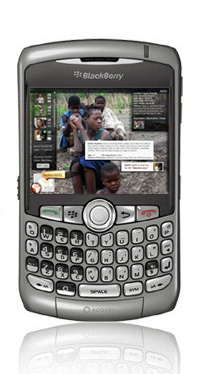
The growing needs for workers heading into the field are becoming far more high-tech than in years past. This is partly because of the new technologies and infrastructure available, and partly because of the need to record a greater number of details at once. That said, I decided to do a quick comparison of some of the better handsets available, to determine if there was one smartphone that was perfect for developmental aid organizations. Eventually, these will be the phones that make apps like this possible.
As many groups need this type of information to make decisions that literally affect lives around the globe, hopefully those of you with experience using these phones or others will chime in in the comments. This research is by no means comprehensive, I’m comparing phones that I know about or have experience with having used them in the field based on four key factors - openness (of the operating system), price, battery life and features. The scoring is simple. There are a potential of three points. (1 - Poor, 2 - Good, 3 - Great). For openness, I was fairly prejudiced - Android OS phones were all 3′s because I know developing for that OS is easier than say Symbian. However if the phone itself lacked certain basic features, the score went down because the hardware itself limits what can be done with the software. For price, the higher scores are given to the devices with the lowest costs.
1. Nokia N96
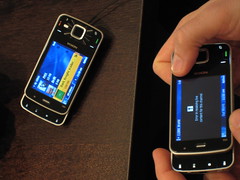
The Nokia N96 is the closest device on this list to a traditional phone. Although it has a slide out keypad, that keypad only has four buttons for controlling multi-media features. This means it’s going to be a phone that people in rural settings really take to natively (if only because they already have extensive experience with the native keypad). It’s listed as retailing for $300+ but I’ve seen them on sale in Africa for as low as (the equivalent of $75) [Link to Cnet Review]
Other Specs - Band WCDMA (UMTS) / GSM 850/900/1800/1900, GPRS, EDGE, Unlocked, Weight (4.4oz), Height (4.1 in), Width (2.2 in), Depth (0.8 in), Camera (5 megapixels, auto-focus), Java, MMS, Battery (220 mins)
Openness - 2
Features - 3
Price - 2
Battery Life - 1
2. Nokia N97

The bigger brother of the N96. The N97 is way more advanced, sporting options like a full-on pull out keyboard which means it’s a little easier for data entry. It supports Bluetooth as do most of these phones, although that’s not a feature I reccomend using if you want to extend your battery life. Usually retails for around $500. [Link to Cnet Review]
Other Specs - WCDMA (UMTS) / GSM 850/900/1800/1900, Unlocked, Weight (5.3oz), Height (4.6 in), Width (2.2 in), Depth (0.6 in), Camera (5 megapixels, auto-focus), Battery (400 mins)
Openness - 2
Features - 3
Price - 1
Battery Life - 2
3. Motorola Droid
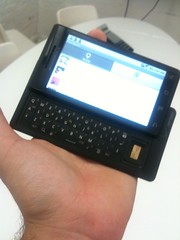
The Motorola Droid is probably the most popular phone running Android to date. It also has a slide-out keyboard which makes text messaging easier and faster. It’s also durable a really assecible design. The price ranges from $200 (Locked) to $600 (Unlocked) [Link to Cnet Review]
Other Specs - CDMA2000 1X 1900/800, Unlocked, Weight (6.0oz), Height (4.6 in), Width (2.4 in), Depth (0.6 in), Bluetooth, Camera (5 megapixels, auto-focus), Battery (385 mins), GPS Receiver
Openness - 3
Features - 3
Price - 2
Battery Life - 2
4. HTC Droid Eris
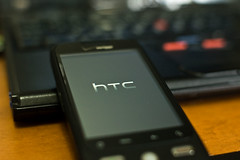
The Droid Eris is a scaled back version of the Droid that goes on average for half the cost. It lacks a physical keyboard but then again so does the more premium Nexus One. The Droid Eris runs the Google Android Operating system which makes it ideal for groups looking to develop or deploy their own software solutions. It features a 5 megapixel, auto-focus camera and retails for around $100. [Link to Cnet Review]
Other Specs - CDMA2000 1X 1900/800, GPS, Unlocked, Weight (4.2oz), Height (4.4 in), Width (2.2 in), Depth (0.5 in), Camera (5 megapixels, auto-focus), MMS, Battery (214 mins), GPS Receiver
Openness - 3
Features - 2
Price - 3
Battery Life - 1
5. Nokia 523x Series Nuron
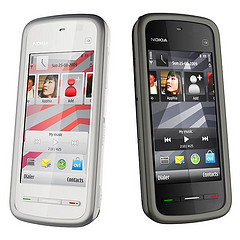
Light weight, but lacking on features despite the fact that it’s Quadband. Also, never trust a touch screen only device in areas that may be high on humidity and low on cleaning supplies. Runs Symbian. Usually retails for far less than $100 [Link to Cnet Review]
Other Specs - GSM 850/900/1800/1900 (Quadband ) / WCDMA 1700/2100 (Dual Band), GPS, EDGE, MMS, Unlocked, Weight (0.57oz), Height (4.37 in), Width (2.03 in), Depth (0.57 in), Bluetooth, Camera, FM Radio, Battery (420 mins), GPS Receiver, but NO WiFi!!
Openness - 1
Features - 1
Price - 3
Battery Life - 2
6. Nokia N900
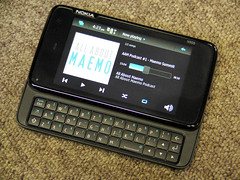
The mother of all compact devices!!! It’s not cheap but it’s the perfect bridge between the PDA and the Laptop (LDA?). This unit puts the PC back into the term Pocket PC with true command-line access, external video output, USB and more. It even supports Flash, PDF’s, XML and XHTML which means all that time and money spent developing XFORMS and other things for less advanced devices goes out the window! On top of that it’s also a phone. It runs Nokia’s new Maemo OS which poses a significant challenge to Google’s Android. Retails between $500 and $700 [Link to Cnet Review]
Other Specs - WCDMA (UMTS) / GSM 850/900/1800/1900, GPS, EDGE, MMS, Unlocked, Weight (6.4oz), Height (4.4 in), Width (2.4 in), Depth (0.7 in), Bluetooth, Camera (5 megapixels, auto-focus), FM Transmitter, Battery (540 mins), GPS Receiver, WiFi
Openness - 3
Features - 3
Price - 2
Battery Life - 3
And the Winner is…
The sexiest thing to ever sport the Nokia brand. This thing is beautiful.
But how does it help with Global Aid? Let’s explore a few scenarios: If you’re an organization that wants to run a survey or data collection pilot in a very rural area without wifi and and limited mobile coverage using some really cheap non-smart phones that are only SMS capable. Even if you use opensource software like Frontline:SMS, Open Data Kit and XForms, the time that gets put into training users, structuring data and porting that data back over to machines probably adds a significant cost to your project. Not to mention the cost of running SMS services.
Now let’s compare this to using an N900. Rather than relying on SMS (notoriously unreliable, although it has reach) you could send 20 surveyors out with 20 of these devices. Rather than relying on SMS, these devices can host websites and database servers locally (written in standard formats) that can be synced seamlessly when there’s actually a connection! Rather than developing expensive custom Java solutions, you can just use basic HTML (meaning less expensive development). I think the cost equals out. Not to mention the fact that unlike just taking a laptop, this device is ALSO a phone.
The Caveat
On this scale the Nokia N900 ranks the highest but to be honest if I had rated the ‘Price’ score any lower (which many people would), it would be on par with the Motorola Droid which is cheaper and has many of the same ‘open’ software options (although lacks most of the hardware options).
In reality the Droid, on cost alone, makes more sense. If you can make it work on the Droid, you cut your cost of using an N900 by 1/3. And at $200 a pop, you’re not cutting back by much at all to opt for the Droid device over the N900.















